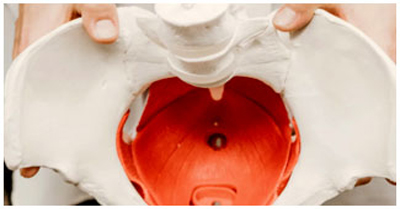Pelvic Organ Prolapse: What You Need to Know

Pelvic Organ Prolapse…To some women, these 3 words have little meaning. To others, these words may carry fear, discomfort and misunderstanding to name a few.
So, what is pelvic organ prolapse?
Pelvic organ prolapse is a subjective disorder with a woman describing an annoying pressure at the perineal area and/or pressure and bulging at or near the vaginal opening. This is a result of weakened muscles and ligaments that support a woman’s pelvic organs: the bladder, rectum, uterus and cervix. Depending on the type of prolapse, women may experience abdominal, back, bladder, bowel and sexual symptoms.
Understandably, this disorder can impact a woman’s participation in daily activities and overall quality of life. It is important to note that symptoms are specific and unique to each person and it is the level of bothersome of these symptoms that will often encourage one to take note and seek out assistance for assessment and treatment.
What are the risk factors for developing pelvic organ prolapse?
Ultimately, it is the strain to the muscles and ligaments over time that negatively impacts the support of pelvic organs.
The main risk factors include increasing age and associated hormonal changes, increasing number of pregnancies and familial history of prolapse. Factors that may also contribute include chronic cough or constipation, heavy weightlifting and obesity.
What does management of this disorder entail?
Treatment options include surgery and conservative management. Often, surgery is used when conservative measures have been unsuccessful.
Conservative management can range from physical therapy to address pelvic floor muscle training, mechanical support through use of vaginal pessaries and lifestyle modifications: constipation management, weightlifting techniques to minimize intra-abdominal pressures and cough suppression/breathing function.
If you can relate to these symptoms, or are wondering if you have pelvic organ prolapse, what should you do?
Book an assessment with a physiotherapist working within pelvic health. Your physiotherapist will complete an in-depth assessment, educate you on findings, anatomy and lifestyle modifications (if needed) and provide specific instruction on pelvic floor muscle training. As well, they will assess the coordination and strength of musculature supporting your hips, pelvis, low back and abdomen.
The good news is that there is high level evidence to support pelvic floor muscle training with the guidance of a trained physiotherapist. In fact, it is recommended to be offered as a first line of treatment to women with pelvic organ prolapse.
For those experiencing symptoms, pelvic floor muscle training can improve the symptoms and severity of prolapse. It is also indicated that better pelvic floor muscle function may be associated with less risk of prolapse and thus is a consideration for prevention.
At the end of it all, your pelvic floor muscles are like any other muscle in the body. Maintain your overall conditioning and this will optimize their functioning.
About the Author
Simone Fleet is one of the talented physiotherapists at Pine! She was born and raised in Edmonton and is a mom to two busy boys. In her spare time, she is part of a Ukrainian dance group. Book your appointment with her today!
References:
- Hagen, S. et al. (2014). Individualised pelvic floor muscle training in women with pelvic organ
prolapse (POPPY): a multicentre randomised controlled trial. Lancet. 383: 796-806. - Abrams,P., Cardozo,L., Khoury, S. and Wein, A. (2013). 5 th International Consultation on
Continence. https://www.ics.org/Publications/ICI_5/INCONTINENCE.pdf (Accessed 08
November 2019). - Hagens, S. & Stark, D. (2011). Conservative prevention and management of pelvic organ
prolapse in women. Cochrane Database of Systematic Reviews. Issue 12.
